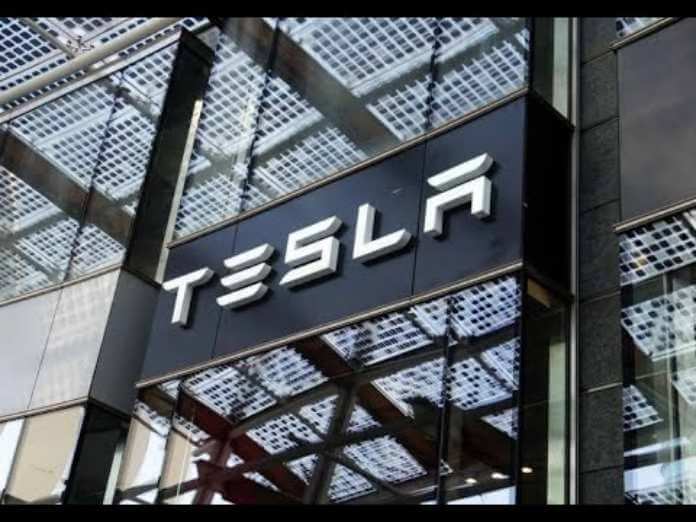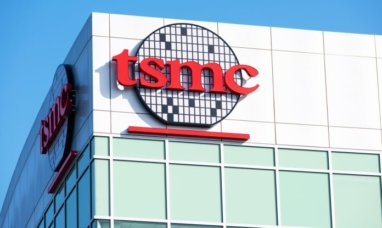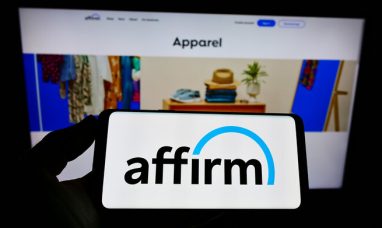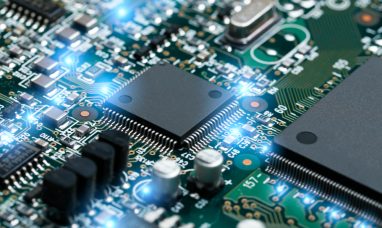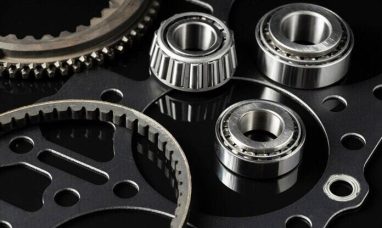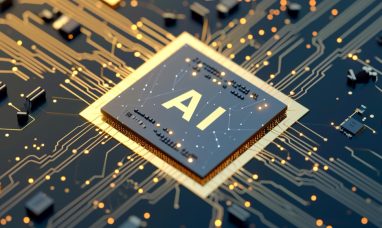After falling to a 15-month low on October 13, Tesla stock has since recovered. BYD stock has reached six-month lows.
BYD Co. (BYDDF) and Tesla (NASDAQ:TSLA) are two rapidly expanding EV titans. While startups like Rivian Automotive (RIVN), Lucid (LCID), Nio (NIO), Xpeng (XPEV), and Li Auto (LI), as well as established automakers like General Motors (GM) and Ford Motor (F) are moving into EVs receive a lot of attention, Tesla and BYD are leading the way.
On October 2, Tesla announced record deliveries for the third quarter, but they fell well short of expectations because of growing concerns about China’s demand. But in the end, Tesla recorded strong sales in China for September.
Despite mounting worries about the general market for EVs in China, BYD reported record-breaking September sales that surpassed 200,000 for the first time. Several new EVs, including a Tesla Model 3 challenger, has been introduced by the EV and battery giant. BYD reached Thailand, Laos, and India last week, and this month deliveries will start in a number of European nations. BYD’s expansion may be unmatched in the car sector in terms of both quantity and speed.
Let’s compare Tesla stock and BYD stock.
Sales of Tesla vs. BYD
Tesla (NASDAQ:TSLA) announced Q3 deliveries of 343,830—up 42% from a year ago and higher than the record-breaking 310,048 in Q1. However, that fell far short of experts’ predictions of over 360,000. In the most recent quarter, Tesla manufactured 365,923 cars, more than 22,000 more than it delivered.
Tesla highlighted transportation issues and vehicles in use. However, that seemed to indicate a last-minute switch to exporting cars built in Shanghai before China’s demand declined.
Along with 18,672 Model S and Model X premium EVs, Tesla delivered 325,158 Model 3 and Model Y vehicles in Q3.
After selling 174,915 new energy cars in August and 162,530 in July, BYD sold a record-breaking 201,259 in September. This increased 183% over the previous year. BYD sold 106,032 plug-in hybrids and 94,941 pure electric cars (BEVs) out of the 200,793 personal automobiles.
BYD sold 538,704 NEVs in Q3, up from 355,021 in Q2 and 194% more than a year prior.
In comparison to Q2, the Chinese giant’s overall car advantage against Tesla nearly quadrupled in Q3. Although BYD shipped 258,610 pure electric vehicles in Q3, it quickly closed the gap with the US EV manufacturer, who still leads in BEV deliveries.
BYD signed an agreement to supply more than 100,000 EVs to SIXT, a major German automobile rental company, over a six-year period on October 4. Then arrangements with Hertz for Tesla and GM electric vehicles (HTZ). The Atto 3 will be made accessible to clients in the fourth quarter, according to SIXT, which claims it would first buy several thousand BYD EVs.
BYD vs. Tesla Expansion
In March and April, respectively, Tesla (NASDAQ:TSLA) established its facilities close to Austin, Texas, and Berlin, Germany. For such sites, Model Y manufacturing is still sluggish but slowly increasing.
Although output in July and the beginning of August was hampered, recently completed renovations to the Tesla Shanghai site greatly increased manufacturing capacity.
Though Tesla China’s demand is finding it difficult to keep up with rising production, in September, wait times at Tesla China were almost nonexistent. Mid-September saw the launch of a new insurance subsidy from Tesla, which was recently extended through the end of the year. Tesla has started offering 0% down payments and special lending rates as of October 1. These incentives essentially lower prices. Tesla is said to be announcing explicit price reductions in China, although this hasn’t happened yet.
According to the China Passenger Car Association, Tesla Shanghai delivered 83,135 cars in September. Tesla sold 77,613 of those domestically, and just 5,522 were exported. After the shortfall in global deliveries in Q3, some people might have thought that the mix of local sales would get worse.
Tesla manufacturing could increase significantly in Q4 compared to Q3, notably in Shanghai, thus, worldwide demand must also pick up speed.
To allay worries about domestic demand, Tesla will export even more of its Shanghai output. However, backlogs in Europe have also started to decrease. In August, Tesla began selling a new, much less expensive basic Model Y in Europe.
BYD is also significantly increasing its EV and battery capacity.
The auto industry behemoth has stated that it expects to sell at least 1.5 million NEVs in 2022 and maybe as much as 2 million. Deliveries should definitely surpass 1.8 million, with 1.9 million or more deliveries being a strong possibility.
By year’s end, BYD plans to deliver 280,000 vehicles every month, according to Chairman Wang Chuanfu on September 2. He specified a four-million delivery target by 2023. He added that BYD has a 700,000-vehicle backlog.
Tesla (NASDAQ:TSLA) has far higher selling prices than BYD since it caters to the premium and budget luxury sectors.
Most BYD EVs and hybrids are priced between $15,000 and $34,000, while an increasing number are priced beyond $40,000. The average selling price is rising.
The world’s largest EV company does intend to upgrade considerably.
A high-end brand, according to BYD, will debut in June 2023 with plans for an off-road vehicle, a luxury sedan, a high-end SUV, and a super automobile. This brand is aimed at the 800,000 yuan ($115,960) to the 2 million yuan market.
In the coming days, BYD’s Denza division, which is 10% owned by Mercedes-Benz, will start shipping D9 minivans. In October, the business anticipates 3,000 deliveries, and by December, 10,000. It begins at slightly under $50,000 and is available in EV and PHEV versions.
Early in 2023, a Denza SUV should be introduced.
Tesla vs. BYD: Electric Vehicles
Tesla (NASDAQ:TSLA) makes four all-electric vehicles: the Model 3 sedan, the Model Y crossover, the opulent Model S SUV, and the Model X SUV. The Model 3 and Model Y make up the great majority, with the Model S and X now being mostly restricted to North America.
The Cybertruck, Roadster, and Semi have all experienced several postponements. According to Musk, the Cybertruck will be ready by mid-2023. However, he predicts that pricing and specifications, which are ambitious even when compared to other Tesla vehicles, won’t be as stated in the first Cybertruck promises from 2019.
Musk announced in a tweet on October 6 that the 2017 Tesla Semi is in production and will begin delivering vehicles to PepsiCo (PEP) on December 1. He claimed that the Semi’s range would be 500 miles. But there are still a lot of important things we don’t know, like how far it can go with cargo, how much it will cost, what kind of batteries it will use, and more.
It’s also unknown whether the Semi will be produced in bulk or in small quantities.
The Cybertruck will likely mostly service the American market in the meantime. Therefore, it’s possible that Tesla won’t release a brand-new passenger EV until 2024 or later.
Going the future, especially in China, an aging model portfolio might be an issue.
Musk recently declared that Tesla is not developing a $25,000 car after years of proclamations to the contrary. Even now, hundreds of competitors would be encountered by such a vehicle, the most coming from Chinese EV manufacturers like BYD.
BYD vs. Tesla: Big And Small BYD EVs
There are numerous models from BYD, some of which are hybrid and electric. In the upcoming months, the carmaker will release a number of new hybrid-only and electric-only cars.
The Seal sedan is BYD’s first obvious direct rival to Tesla. Similar in size and range to a Model 3, the BYD Seal is $10,000 less expensive. The starting price of the Seal is 212,800 RMB ($31,130), compared to a made-in-China Model 3’s 279,900 RMB ($41,950).
Late in August, BYD began delivering Seals; by September, 7,473 Seals had been delivered. The production is anticipated to continue increasing and will reach several foreign markets in 2023.
On the cheap end, a BYD Seagull hatchback with an MSRP of close to $20,000 will shortly be on sale.
The Seal Lion, an all-electric SUV that might compete with the Tesla Model Y at a significantly lower price, will be unveiled by BYD in a few months.
The Frigate 07, a mid-sized SUV and the second Model in the Warship family of plug-in hybrids, were recently presented by BYD. Sales of the Destroyer PHEV sedan, which was introduced this spring, are rising.
Along with having factories in China, BYD is also one of the major manufacturers of electric buses. Delivery trucks, heavy rigs, garbage trucks, and other vehicles are all produced by BYD.
At its Lancaster, California, facility, BYD manufactures buses, large rigs, and other heavy vehicles for the American market.
BYD vs. Tesla Stock: EV Markets
With significant sales in North America, Europe, and China, Tesla (NASDAQ:TSLA) is a worldwide EV juggernaut. Korea and a few other Asian nations are important markets for it. It has four facilities, including one in Austin, Texas, the Berlin region, Shanghai, and Fremont, California. Tesla already ships products, primarily from Shanghai, to Europe.
Less Model Ys will be exported to Europe from the Shanghai production as the Berlin plant starts up, but Model 3 exports are expected to continue.
Although Tesla’s capacity is increasing, it doesn’t have any significant new markets or passenger EVs in the near future.
New EV tax credits have recently been authorized in the US. Tesla, which is no longer qualified under the previous scheme, ought to prevail. However, eligibility for Tesla automobiles and customers may be restricted by income and vehicle price limitations. A necessity for a significant and increasing proportion of battery materials and components to come from North America might make things more difficult.
The new regulations, which require North American assembly, do, at the very least, prevent many Tesla competitors from receiving tax incentives.
Although BYD has most of its sales and its vehicle manufacturing in China, both of those things are going to change.
In Thailand, BYD plans to construct a manufacturing facility. In 2024, the facility with an emphasis on exports should be operational, with a capacity to produce 150,000 vehicles annually.
In September, BYD’s exports reached a new record of 7,736, up from 5,092 in August and 4,026 in July. The following few months should see a rise in that number.
Deliveries of the Atto 3 have begun by BYD in Singapore, Australia, and New Zealand. In most foreign countries, the Yuan Plus is referred to as the Atto 3. Following in the next weeks and months will be a number of other Asian nations.
BYD conducted a debut ceremony for its three first models, the Tang SUV, the Han sedan, and the Atto 3, on September 28. Most of Europe will start receiving deliveries in October or by the year’s end. Since the end of 2021, BYD has been selling the Tang SUV in Norway. BYD’s European pricing is significantly more than the vehicle’s Chinese sticker price, indicating the manufacturer wants to position itself as a premium or almost premium brand on the Continent.
In October, BYD starts making deliveries in Germany and a few other nations; more will come by year’s end.
On October 10, BYD formally joined the Thai market; deliveries will begin later in the year. On October 11, BYD announced the Atto 3 for India. A week ago, it also entered Laos.
With the Atto 3, Dolphin/Atto 2, and Seal/Atto 4 in late 2023, the EV behemoth will launch in Japan.
BYD is stepping up its sales in Latin America, particularly in Brazil.
Officially, BYD is not targeting the United States with their personal EVs. Automobile exports from China to the US are prohibitively expensive due to tariffs. With plenty of additional room at its Lancaster, California, facility west of Los Angeles, BYD does manufacture some EV buses here.
BYD vs. Tesla Batteries
Tesla does not manufacture battery cells in bulk. The Panasonic company, which manufactures the cells, is a partner in the gigafactory in Sparks, Nevada. Tesla purchases off-the-shelf batteries from CATL in China and more frequently in the US.
It is moving more and more toward lithium-iron phosphate batteries. LFPs offer certain cost benefits, which have increased as a result of the fact that, unlike lithium-ion batteries, they don’t need cobalt or nickel.
Though the top-of-the-line Lucid Air has greater battery efficiency than Tesla, Tesla has long been a leader in squeezing more out of its batteries.
In a test project, Tesla is creating its own 4680 battery cells. The batteries in the 4680 don’t use any novel chemistry. Although there may be economic advantages with the bigger form factor, there are still technological difficulties.
In contrast, BYD batteries are completely domestic. Among the safest EV batteries now on the market are the BYD Blade batteries, a specialist LFP battery.
BYD surpassed LG to take over as the No. 2 EV battery manufacturer in the world in July, although it is still far behind China’s CATL. BYD batteries in its own cars have mostly driven growth, but that is changing.
Tesla Berlin is currently receiving Blade batteries from BYD. It’s a significant endorsement for BYD, which wants to become a major battery supplier to independent manufacturers.
BYD batteries are used in the Ford Mustang Mach-E, which was built in China.
BYD batteries and motors will be used by Toyota (TM) in the bZ3, a forthcoming compact EV for the Chinese market. In the upcoming years, BYD may play a significant role in Toyota’s larger drive for EVs.
The efforts of automakers to restrict the supply of lithium and other essential raw materials for batteries are led by BYD and Tesla.
Although Musk has talked about it, Tesla has not yet entered the lithium mining industry. Recently, Tesla suggested building a lithium processing facility in Texas.
BYD has previously taken part in a number of lithium mining initiatives.
Featured Image: Megapixl © Sergiomonti









